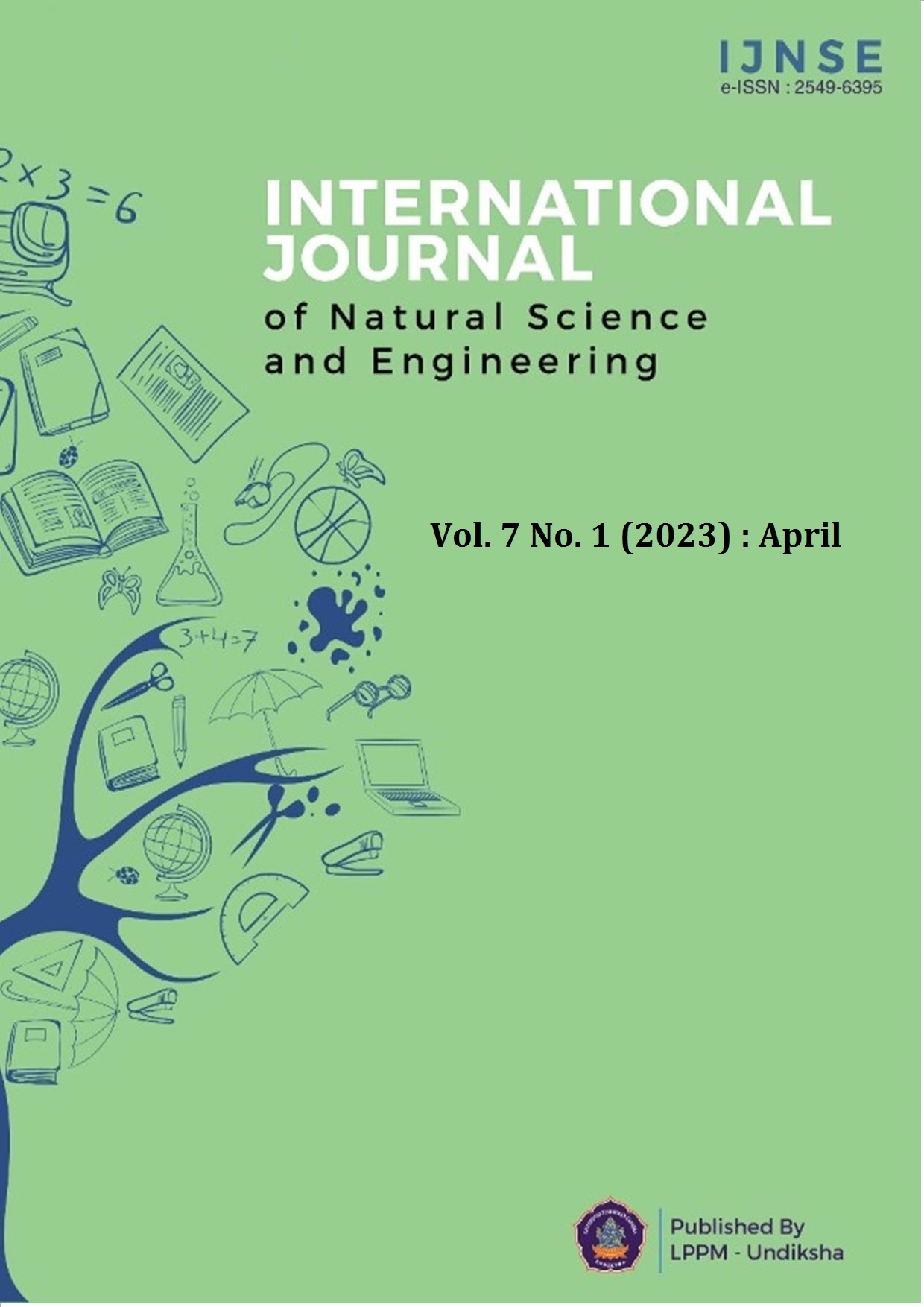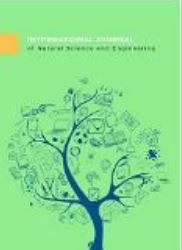The Effect of Using a Traditional Mask of Moringa Leaves for Dry Facial Skin Care
DOI:
https://doi.org/10.23887/ijnse.v7i1.58199Keywords:
Effect, The Traditional Moringa Leaf Masks, Face Treatment, Dry SkinAbstract
Dry facial skin can be caused by several factors including age, sun exposure, weather, genetics, skin structure, diet, environmental factors, and skin diseases. The purpose of this study was to determine the effect of using traditional Moringa leaf masks for dry facial skin care. This type of research is experimental research with quasi-experimental methods. The research sample consisted of 6 samples using the purposive sampling method. The type of data used is primary data. Data analysis used the normality test, homogeneity test, and hypothesis testing (ANOVA), followed by the Duncan test. Analysis of normality and homogeneity of the data is used to test prerequisite analysis before testing the hypothesis. The results showed that in the control group (X0) without the use of traditional moringa leaf masks, there was no change in the level of skin moisture and the level of smoothness of facial skin texture. In the experimental group X1 and X2 using a traditional leaf mask showed a significant change in the level of moisture and smoothness of facial skin texture. There are differences in the effect of treating dry faces on women aged 35-45 years using traditional masks from Moringa leaves in three different treatments for indicators of moisture and facial skin texture with a significance of 0.016 <0.050.
References
Almeida, T., Silvestre, A. J., Vilela, C., & Freire, C. S. (2021). Bacterial nanocellulose toward green cosmetics: Recent progresses and challenges. International Journal of Molecular Sciences, 22(6), 2836. https://doi.org/10.3390/ijms22062836. DOI: https://doi.org/10.3390/ijms22062836
Arauzo, M. G., Antón, Á., & Villarroel, J. D. (2021). Collagen in the media: An analysis of news published between 2016 and 2018. Biochemistry and Molecular Biology Education, 49(2), 242–250. https://doi.org/10.1002/bmb.21450. DOI: https://doi.org/10.1002/bmb.21450
Asthana, N., Pal, K., Aljabali, A. A., Tambuwala, M. M., de Souza, F. G., & Pandey, K. (2021). Polyvinyl alcohol (PVA) mixed green–clay and aloe vera based polymeric membrane optimization: Peel-off mask formulation for skin care cosmeceuticals in green nanotechnology. Journal of Molecular Structure, 1229, 129592. https://doi.org/10.1016/j.molstruc.2020.129592. DOI: https://doi.org/10.1016/j.molstruc.2020.129592
Badriyah, B., Achmadi, J., & Nuswantara, L. K. (2017). Kelarutan senyawa fenolik dan aktivitas antioksidan daun kelor (Moringa oleifera) di dalam rumen secara in vitro. Jurnal Peternakan Indonesia (Indonesian Journal of Animal Science), 19(3), 120–125. https://doi.org/10.25077/jpi.19.3.116-121.2017. DOI: https://doi.org/10.25077/jpi.19.3.116-121.2017
Beringhs, A. O. R., Rosa, J. M., Stulzer, H. K., Budal, R. M., & Sonaglio, D. (2013). Green clay and aloe vera peel-off facial masks: response surface methodology applied to the formulation design. Aaps Pharmscitech, 14, 445–455. https://doi.org/10.1208/s12249-013-9930-8. DOI: https://doi.org/10.1208/s12249-013-9930-8
Burlando, B., & Cornara, L. (2013). Honey in dermatology and skin care: a review. Journal of Cosmetic Dermatology, 12(4), 306–313. https://doi.org/10.1111/jocd.12058. DOI: https://doi.org/10.1111/jocd.12058
Couteau, C., & Coiffard, L. (2016). Overview of skin whitening agents: Drugs and cosmetic products. Cosmetics, 3(3), 27. https://doi.org/10.3390/cosmetics3030027. DOI: https://doi.org/10.3390/cosmetics3030027
Dattola, A., Silvestri, M., Bennardo, L., Passante, M., Scali, E., Patruno, C., & Nisticò, S. P. (2020). Role of vitamins in skin health: A systematic review. Current Nutrition Reports, 9, 226–235. https://doi.org/10.1007/s13668-020-00322-4. DOI: https://doi.org/10.1007/s13668-020-00322-4
Draelos, Z. D. (2018). The science behind skin care: moisturizers. Journal of Cosmetic Dermatology, 17(2), 138–144. https://doi.org/10.1111/jocd.12490. DOI: https://doi.org/10.1111/jocd.12490
Fauzi, A. R. (2013). Merawat kulit dan Wajah. Elex Media Komputindo.
Fongnzossie, E. F., Tize, Z., Nde, P. F., Biyegue, C. N., Ntsama, I. B., Dibong, S. D., & Nkongmeneck, B. A. (2017). Ethnobotany and pharmacognostic perspective of plant species used as traditional cosmetics and cosmeceuticals among the Gbaya ethnic group in Eastern Cameroo. South African Journal of Botany, 112, 29–39. https://doi.org/10.1016/j.sajb.2017.05.013. DOI: https://doi.org/10.1016/j.sajb.2017.05.013
Fujiko, M., Siahaan, D. N., Dachi, K., & Sumardi, S. (2022). Edukasi Pembuatan Masker Wajah dari Kombinasi Bahan Alami bagi Siswa/Siswi SMA IT Khairul Imam Medan Pada Tahun 2022. Jurnal Pengabdian Masyarakat Tjut Nyak Dhien, 1(2), 90–98. https://doi.org/10.36490/jpmtnd.v1i2.317. DOI: https://doi.org/10.36490/jpmtnd.v1i2.317
Gaspar, A. L., Gaspar, A. B., Contini, L. R., Silva, M. F., Chagas, E. G., Bahú, J. O., & Yoshida, C. M. (2022). Lemongrass (Cymbopogon citratus)-incorporated chitosan bioactive films for potential skincare applications. International Journal of Pharmaceutics, 628, 122301. https://doi.org/10.1016/j.ijpharm.2022.122301. DOI: https://doi.org/10.1016/j.ijpharm.2022.122301
Hendrawati, T. Y., Nugrahani, R. A., Utomo, S., & Ramadhan, A. I. (2018). Formulation process making of Aloe vera mask with variable percentage of Aloe vera gel extract. IOP Conference Series: Materials Science and Engineering, 012013. https://doi.org/10.1088/1757-899X/403/1/012013. DOI: https://doi.org/10.1088/1757-899X/403/1/012013
Ismayanti, A. N., Indriaty, S., & heryanti Ramdani, J. P. (2021). Formulasi Masker Gel Peel-Off Dari Lendir Bekicot (Achatina fulica Bowdicth) Dan Ekstrak Etanol Daun Binahong (Anredera cordifolia (Ten.) Steenis). Journal of Pharmacopolium, 4(1). https://doi.org/10.36465/jop.v4i1.715.
Kawarkhe, P. R., Deshmane, S. V., & Biyani, K. R. (2016). Formulation and evaluation of antioxidant face cream containing raspberry fruit and grape seeds extract. Research Journal of Topical and Cosmetic Sciences, 7(2), 73–78. https://doi.org/10.5958/2321-5844.2016.00012.1. DOI: https://doi.org/10.5958/2321-5844.2016.00012.1
Khansa, M. (2019). Jagung sebagai Masker Terhadap Kesehatan Kulit Wajah Kering Secara Alami. Jurnal Tata Rias, 9(2), 32–41. https://doi.org/10.21009/9.2.4.2009. DOI: https://doi.org/10.21009/9.2.4.2009
Kusmardika, D. A. (2020). Potensi aktivitas antioksidan daun kelor (Moringa oleifera) dalam mencegahan kanker. Journal of Health Science and Physiotherapy, 2(1), 46–50. https://doi.org/10.35893/jhsp.v2i1.33. DOI: https://doi.org/10.35893/jhsp.v2i1.33
Lee, S. Y., Baek, N., & Nam, T. G. (2016). Natural, semisynthetic and synthetic tyrosinase inhibitors. Journal of Enzyme Inhibition and Medicinal Chemistry, 31(1), 1–13. https://doi.org/10.3109/14756366.2015.1004058. DOI: https://doi.org/10.3109/14756366.2015.1004058
Lomban, A., Kalangi, S. J., & Pasiak, T. F. (2020). Manfaat Olesan Madu Pada Penyembuhan Luka Kulit. EBiomedik, 8(2). https://doi.org/10.35790/ebm.v8i2.31902. DOI: https://doi.org/10.35790/ebm.v8i2.31902
Madikizella, F., & Astuti, M. (2022). Kelayakan Masker Tradisional Daun Kelor Untuk Perawatan Kulit Wajah Kering. Jurnal Tata Rias Dan Kecantikan, 2(3), 110–113. https://doi.org/10.24036/.v2i3.47. DOI: https://doi.org/10.24036/.v2i3.47
Murnalis, M. (2019). Manfaat Lidah Buaya Sebagai Masker Untuk Perawatan Kulit Tangan Kering. Jurnal Pendidikan Dan Keluarga, 11(1), 53–62. https://doi.org/10.24036/jpk/vol11-iss1/591. DOI: https://doi.org/10.24036/jpk/vol11-iss1/591
Nilforoushzadeh, M. A., Amirkhani, M. A., Zarrintaj, P., Salehi Moghaddam, A., Mehrabi, T., Alavi, S., & Mollapour Sisakht, M. (2018). Skin care and rejuvenation by cosmeceutical facial mask. Journal of Cosmetic Dermatology, 17(5), 693–702. https://doi.org/10.1111/jocd.12730. DOI: https://doi.org/10.1111/jocd.12730
Ningsih, A. M. M., & Ambarwati, N. S. S. (2021). Pemanfaatan Lidah Buaya (Aloe vera) Sebagai Bahan Baku Perawatan Kecantikan Kulit. Jurnal Tata Rias, 11(1), 91–100. https://doi.org/10.21009/11.1.11.2009. DOI: https://doi.org/10.21009/11.1.11.2009
Paramsothy, S., Kamm, M. A., Kaakoush, N. O., Walsh, A. J., van den Bogaerde, J., Samuel, D., & Borody, T. J. (2017). Multidonor intensive faecal microbiota transplantation for active ulcerative colitis: a randomised placebo-controlled trial. The Lancet, 389(10075), 1218–1228. https://doi.org/10.1016/S0140-6736(17)30182-4. DOI: https://doi.org/10.1016/S0140-6736(17)30182-4
Perwita, M. H. (2019). Pemanfaatan ekstrak moringa oleifera sebagai masker organik untuk merawat kesehatan kulit wajah. Jurnal Keluarga Sehat Sejahtera, 17(2), 36–41. https://doi.org/10.24114/jkss.v17i2.16469.
Putri, N. D. (2019). Fakto-faktor Keputusan Konsumen Dalam Membeli Kosmetika Perawatan Wajah. Jurnal Tata Rias, 9(2), 22–31. https://doi.org/10.21009/9.2.3.2009. DOI: https://doi.org/10.21009/9.2.3.2009
Rahmawaty, A. (2020). Peran Perawatan Kulit (Skincare) yang Dapat Merawat atau Merusak Skin Barrier. Berkala Ilmiah Mahasiswa Farmasi Indonesia, 7(1), 5–10. https://doi.org/10.48177/bimfi.v7i1.32. DOI: https://doi.org/10.48177/bimfi.v7i1.32
Rudi, R., Sulistyaningtyas, F., & Ratnasari, D. (2017). Pembuatan Sediaan Masker Tepung Beras Organik Dan Kayu Manis (Cinnamomum Burmannii Nees Ex Bl) Untuk Mengobati Kulit Pada Wajah Berjerawat. Journal of Holistic and Health Sciences (Jurnal Ilmu Holistik Dan Kesehatan), 1(1), 40–49. https://doi.org/10.51873/jhhs.v1i1.4. DOI: https://doi.org/10.51873/jhhs.v1i1.4
Sanad, R. A. E. B., & Mabrouk, M. I. (2016). Development and assessment of stable formulations containing two herbal antimicrobials: Allium sativum L. and Eruca sativa miller seed oils. Drug Development and Industrial Pharmacy, 42(6), 958–968. https://doi.org/10.3109/03639045.2015.1096280. DOI: https://doi.org/10.3109/03639045.2015.1096280
Siregar, M., Lestari, S., & Lubis, A. H. (2019). Analysis Of Marketing Strategy In Students Face Masks Business Folta Repper: Folium Tamarin Rice Paper. JASc (Journal of Agribusiness Sciences), 2(2), 66–72. https://doi.org/10.30596/jasc.v2i2.3209. DOI: https://doi.org/10.30596/jasc.v2i2.3209
Sopianti, D. S., & Bulan, P. S. (2018). Ekstrak Bawang Putih (Allium Sativum L) Sebagai Zat Aktif Pada Formulasi Sediaan Gel. Jurnal Ilmiah Ibnu Sina, 3(1), 106–114. https://doi.org/10.36387/jiis.v3i1.130.
Tepper, S., Ashina, M., Reuter, U., Brandes, J. L., Doležil, D., Silberstein, S., & Lenz, R. (2017). Safety and efficacy of erenumab for preventive treatment of chronic migraine: a randomised, double-blind, placebo-controlled phase 2 trial. The Lancet Neurology, 16(6), 425–434. https://doi.org/10.1016/S1474-4422(17)30083-2. DOI: https://doi.org/10.1016/S1474-4422(17)30083-2
Tiwari, N., Osorio‐Blanco, E. R., Sonzogni, A., Esporrín‐Ubieto, D., Wang, H., & Calderón, M. (2022). Nanocarriers for skin applications: where do we stand? Angewandte Chemie International Edition, 61(3). https://doi.org/10.1002/anie.202107960. DOI: https://doi.org/10.1002/anie.202107960
Umah, K., & Herdanti, O. (2017). Masker Madu Berpengaruh pada Penyembuhan Acne vulgaris (Honey Mask Influence on Healing Acne Vulgaris). Journals of Ners Community, 8(2), 179–187. https://doi.org/10.55129/jnerscommunity.v8i2.432.
Virgita, V. M., & Krisnawati, M. (2014). Pemanfaatan Ketan Hitam Sebagai Masker Wajah. Beauty and Beauty Health Education, 3(1). https://doi.org/10.15294/BBHE.V3I1.7801.
Wiendarlina, I. Y., Wulandari, C., Rustiani, E., & Sofihidayati, T. (2020). Training On Making Traditional Masks and Scrubs Made From Aloe Vera Plants In Ciomas-Bogor. Journal of Community Engagement (JCE), 2(1), 31–36. https://doi.org/10.33751/jce.v2i01.2796.





